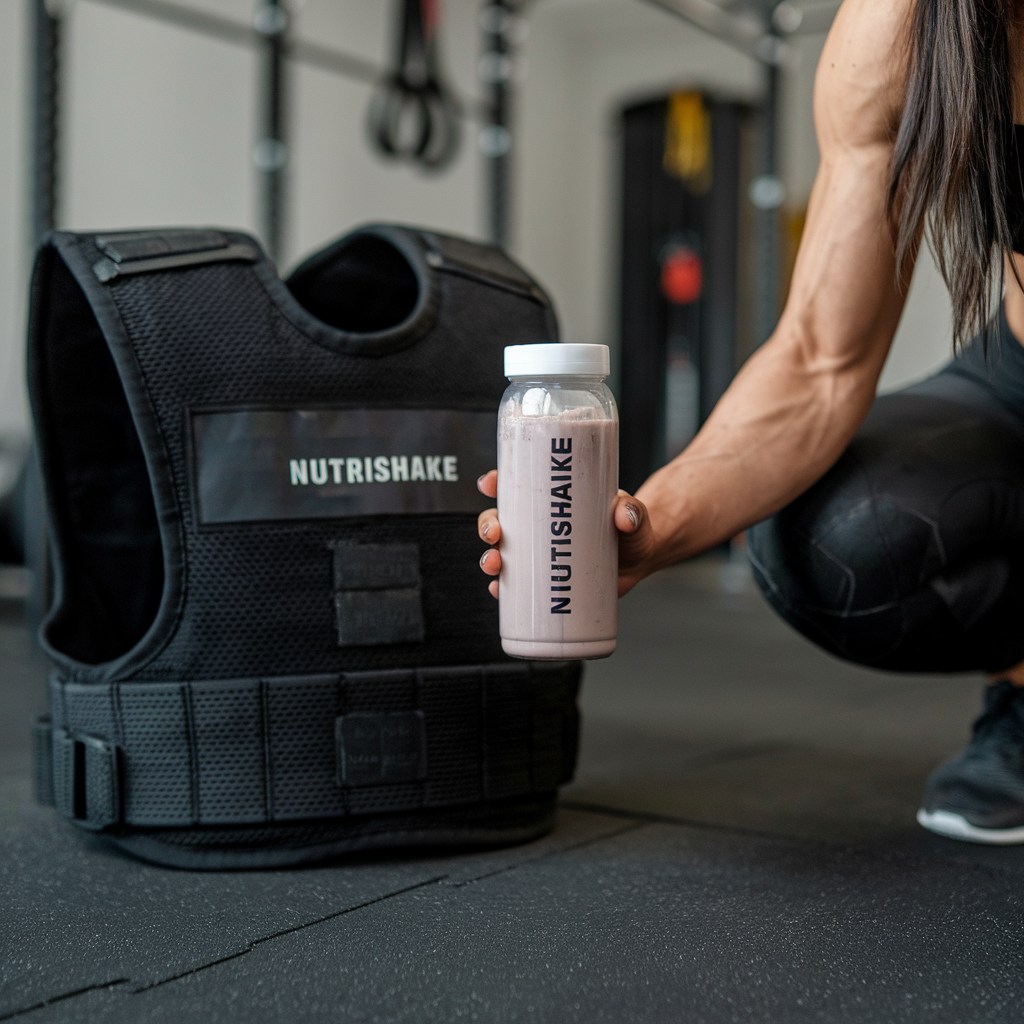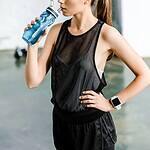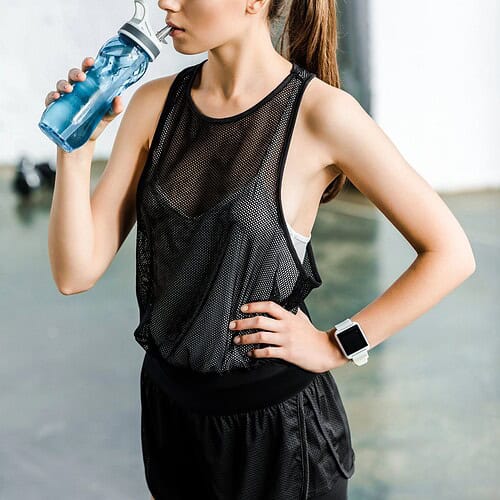
Key Takeaways:
- Proper nutrition is important as it maximize performance and recovery while doing weighted vest training.
- Pre-workout meals keep the body fueled, granting energy to drive through intense sessions.
- Post-exercise nutrition helps to replenish glycogen and assist muscle repair and growth.
- A healthy diet ensures optimal growth and minimizes the risk of fatigue or inferior performance.
Introduction
Proper pre- and post-workout nutrition is essential to maximize performance and recovery during weighted vest training. Food selection at the right time will fuel your body, replenish glycogen stores, and support muscle repair and growth. This will go in-depth into the strategies for pre- and post-workout meals, including actionable tips and example meal plans to supercharge your training.
Pre- and Post- Weighted Vest Workout Nutrition: Why is It Important?
In order to derive maximum benefit with your weighted vest, it is important to fuel your body appropriately. Proper nutrition provides the energy to power through intense sessions and assures effective recovery afterward. Failure to meet your nutritional requirements only leaves you at risk of underperforming, feeling fatigued, and probably hindering your progress.
Pre Workout Nutrition for Weighted Vest Training
What you eat before your workout is going to determine how you perform to a great extent. A well-planned pre-workout meal will give you the energy to push through those tough sessions.
Energy-Boosting Foods Before Workouts
Your pre-workout meal should focus on providing long-lasting energy. Make sure to maintain a balance of carbs, protein, and healthy fats.
Carbohydrates: These represent the main energy source of your body. Go for complex carbohydrates such as oatmeal, brown rice, or sweet potatoes because they release their energy slowly.
Protein: Lean proteins load your muscles ahead of the weight they will be carrying, using chicken, eggs, or plant-based protein.
Fats: Nuts or avocado are good sources of healthy fats; these give long-lasting energy, so be careful because they digest slowly.
Example: Oatmeal topped with banana slices and a dollop of almond butter in the middle, with a boiled egg on the side.
Hydration Strategies
Hydration is just as important as food. When wearing a weighted vest, your body generates more heat and therefore sweats more. Proper hydration ensures optimal muscle function and temperature regulation.
Prehydration: At least 16–20 ounces of water should be consumed 2–3 hours before any exercise.
Electrolyte Balance: Add some electrolytes to your fluids to replenish lost sodium and potassium from sweating. Coconut water or a light electrolyte drink will suffice.
Addition Options: Supplements can give that extra push. Here are some effective pre-workout supplements:
Caffeine: Gives energy and concentration.
Creatine: Increases strength and performance, mostly in high-intensity activities.
Beta-Alanine: Delays muscle fatigue by buffering lactic acid.
Always test supplements in lighter sessions to gauge the reaction of your body.
Post Workout Nutrition for Weighted Vest Training
After a hard workout, your body needs food for recovery, reconstruction, and replenishment. Just like pre-workout meals, what you eat after your workout is of utmost importance.
Protein for Muscle Recovery
Weighted vest training breaks down muscle fibers, and protein helps to repair and rebuild them stronger. Aim for 20–40 grams of protein post-workout. Great sources include:
Animal proteins: Chicken breast, fish, or whey protein.
Plant-based alternatives: lentils, tofu, or pea protein powder.
Carbohydrates for Energy Refueling
Carbs are needed to restore glycogen that is used up during exercise. Take your protein with fast-digesting carbohydrates such as:
- White rice or pasta
- Fruits like bananas, apples, or berries
- Whole-grain bread
- 3:1 ratio of carbs to protein is generally considered optimal for recovery.
Micronutrient Considerations
The supportive role that micronutrients play during recovery.
Magnesium: Assists in relaxation and reduction of muscle cramps (found in spinach, nuts, and seeds).
Vitamin C: Helps to repair tissues and is an anti-inflammatory (citrus fruits, bell peppers).
Zinc: Helps muscle repair (pumpkin seeds, seafood).
Consider adding a side salad or steamed vegetables to your post-workout meal to increase the intake of micronutrients.
Timing Considerations
When you eat is sometimes just as important as what you eat. Eating at the right time, strategically, will keep you fueled and ready when it counts most.
Timing of Pre-Workout Nutrition
You should consume your pre-workout meal 2–3 hours before training to allow for digestion. If you’re short on time, a great alternaltive, would be eating a light snack like a banana with a spoonful of peanut butter 30–60 minutes before your workout.
Timing of Post-Workout Nutrition
Aim to eat your post-workout meal ideally within 30–60 minutes of finishing your session. During this time, your body is at peak efficiency in absorbing all the nutrients needed to repair and refuel.
Sample Pre-Workout Meal Plan
A balanced, nutrient-dense meal plan has to be followed in order to increase performance and aid in recovery during weighted vest training. Below is an expanded version of pre- and post-workout meal plans with variety to fit different tastes and preferences while ensuring you meet your nutritional needs.
2–3 Hours Before Training
High quality Protein and Carbohydrate Balance
Protein: Grilled chicken breast, 4 oz, marinated with garlic, paprika, and a drizzle of olive oil.
Carbohydrates: 1 cup cooked quinoa or brown rice, sprinkle some parsley on top to flavor End.
Vegetables: 1 cup steamed broccoli or asparagus, lightly seasoned with lemon juice and black pepper.
Beverage: One glass of water or herbal tea.
Vegetarian-Friendly option
Protein: 1 cup cooked lentils flavoured with cumin and turmeric.
Carbohydrates: 1 medium baked sweet potato topped with a teaspoon of coconut oil.
Vegetables: On the side, roasted zucchini and bell peppers drizzled with balsamic glaze.
Drink: Coconut water for light hydration and electrolytes.
30 Minutes Before Workout (Optional Snack)
If you want a kick right before your workout:
One medium banana with 1 tablespoon of almond butter.
A small handful of raw almonds or walnuts.
Smoothie made with unsweetened almond milk, a handful of spinach, ½ a frozen banana, and a scoop of protein powder (optional).
Sample Post-Workout Meal Plan
Within 1 Hour Post-Training
Balanced Recovery Meal
Protein: 6 oz grilled salmon, marinated with lemon and dill.
Carbohydrates: 1 medium sweet potato, mashed with a pinch of cinnamon.
Vegetables: Mixed greens with cherry tomatoes, cucumber, and avocado in a light vinaigrette made from olive oil and balsamic vinegar.
Drink: A glass of water with a slice of lime or electrolyte-enhanced water.
Plant-Based Recovery Meal
Protein source: Grilled tofu (6 oz) or one cup of cooked chickpeas.
Carbs: 1 cup cooked farro or couscous.
Veggies: Sauteed spinach and kale with garlic on the side.
Drink: A green juice made fresh with cucumber, celery, and apple.
Snack Option (if needed, 1– Hours After the Meal)
Protein and Carb Combo
Greek yogurt (¾ cup) topped with 1 tsp of honey and a mixture of fresh berries (blueberries, strawberries).
Light and Lean
One slice whole-grain bread with a thin layer of peanut butter and sprinkled with chia seeds.
Smoothie Bowl
Combine unsweetened almond milk, frozen mango chunks, and a scoop of whey or plant-based protein powder in a blender. Top with granola and a few sliced almonds.
All meal plans are flexible and can be adjusted based on your dietary preferences, portion needs, and workout intensity. If you train in longer sessions or under more extreme conditions, you may want to increase the portion size or add an extra snack. And don‘t forget to listen to your body. Nutrition is about feeding your body for maximal performance and recovery.
Benefits of Weighted Vest Training
Increased Strength and Muscle Building
A weighted vest adds resistance to your movements, so your muscles have to work harder. This results in:
Increased muscle protein synthesis to build muscle more efficiently.
Increased muscle fiber recruitment makes even simple bodyweight exercises, such as push-ups or squats, more difficult and productive.
Better development of muscle tissue via progressive overload is a core tenet in strength training.
Healthier Cardiovascular System
This presents more resistance to challenge your heart and lungs, therefore improving cardiovascular endurance.
The additional weight makes your body adapt, and that results in an increase in aerobic capacity and stamina.
Walking, running, or hiking with a vest on will elevate your heart rate and is a great tool for endurance exercise.
By including pre- and post-workout nutrition, you can maintain energy throughout and recover appropriately, allowing for continual cardiovascular gains.
Bone Density Improvement
Weighted vest training loads your skeleton, which increases bone growth and strength.
This resistance stimulates bone remodeling, making the bones more dense with time.
This benefit is especially helpful in the prevention of osteoporosis and other bone-related diseases.
Adequate intake of calcium-containing foods and other micronutrients in your diet supports this process.
Better Caloric Burn
Adding weight increases the energy needs of your workout, thus burning more calories.
Whether it is weight training or cardio, you use more calories to feed the extra workload.
A post-workout meal high in protein and carbs can help replace the calories burned and assist in recovery.
Functionally Increase Strength
Weighted vest training improves functional strength, making everyday activities easier over time. Things like climbing stairs or hiking or even carrying groceries become less taxing as your body adapts to the added resistance. Such training also develops good balance, coordination, and agility—all very useful for both athletes in training and people looking to better their everyday fitness.
Conclusion:
You don’t optimize your nutrition for weighted vest training by eating more; you do it by eating right. Leading up to your workouts, concentrate on energy-dense foods, and afterward, recovery-focused meals to enhance performance and have your body bounce back stronger.
Remember, hydration and timing play a critical role as well. By adopting a mindful approach to your pre-and post-training nutrition, you will maximize the benefits of weighted vest training and reach your fitness goals.
FAQs
Why are carbohydrates important in pre- and post-workout nutrition?
Carbohydrates power you through your workout and afterward help replenish lost energy stores so you’re ready for the next session.
How much protein after workout should I have?
After your workout, take in 20–40 grams of protein to stimulate muscle protein synthesis. This amount works best for most individuals.
Can I eat fat in my post-workout meal?
Yes, but keep it moderate. Low-fat options ensure faster digestion, which is ideal after exercise.
What are good pre-workout snacks?
Light, easy-to-digest options like a banana with almond butter or a sports drink will provide you with energy without weighing you down.
Can I skip pre-workout nutrition if I‘m not hungry?
No. Even a light snack, like a few nuts or a piece of fruit, makes sure you have the fuel you need to perform at your best.
Should endurance athletes eat differently?
Yes, endurance athletes may need more carbohydrates to sustain prolonged exercise sessions and replenish glycogen stores effectively.
Is timing really that important?
Yes, nutrient timing helps maximize recovery. Eating protein and carbs within 30 minutes of your workout works best for rebuilding and replenishment.
References:
1. Beck KL, Thomson JS, Swift RJ, von Hurst PR. Role of nutrition in performance enhancement and postexercise recovery. Open Access J Sports Med. 2015 Aug 11;6:259-67. doi: 10.2147/OAJSM.S33605. PMID: 26316828; PMCID: PMC4540168.
2. Ormsbee MJ, Bach CW, Baur DA. Pre-exercise nutrition: the role of macronutrients, modified starches and supplements on metabolism and endurance performance. Nutrients. 2014 Apr 29;6(5):1782-808. doi: 10.3390/nu6051782. PMID: 24787031; PMCID: PMC4042570.







